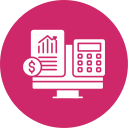
Illuminating the Numbers: Cloud-Powered Financial Transparency
Chosen theme: Improving Financial Transparency with Cloud Technology. Explore how real-time data, governed architectures, and collaborative cloud tools remove financial fog, build trust with stakeholders, and let you act faster. Subscribe, comment with your challenges, and help shape our next deep dive.


Why Transparency Thrives in the Cloud
Moving to cloud-native ledgers and data streams turns static month-end snapshots into a continuous view. Leaders monitor variances daily, investigate anomalies immediately, and reduce the anxiety of late surprises.
Why Transparency Thrives in the Cloud
Shared semantic models unify revenue recognition, cost categories, and KPIs. Finance, product, and operations stop arguing about versions and start solving problems with the same definitions and live numbers.
Lakehouse layers that make sense
Raw, curated, and trusted layers keep ingestion separate from business-ready data. Each step is documented, versioned, and testable, so auditors and analysts see the same, consistent truth.
Metadata, tags, and lineage by default
Automatic lineage graphs show where a number came from, which rules touched it, and when. Cost and department tags travel with transactions, simplifying allocations and strengthening accountability.
APIs and event streams over batch dumps
Instead of nightly exports, streaming connectors feed ERP, billing, and banking data into the platform. Near-real-time flows reduce reconciliation delays and expose risks before they grow costly.
Real-Time Reporting and the Continuous Close
Event-driven pipelines post journal entries within minutes, updating revenue and expense views continuously. Managers spot trend breaks mid-week and correct course instead of explaining them weeks later.
Real-Time Reporting and the Continuous Close
Deterministic rules match obvious items, while anomaly detection flags outliers. Teams focus on judgment calls, not repetitive matching, with every action logged for audit and learning.





FinOps Meets Finance: Cost Transparency That Drives Value
Consistent tagging and allocation models map spend to teams and features. Leaders see what drives costs and can invest or prune based on evidence, not estimates or politics.

ESG and Extended Transparency in the Cloud
Carbon and impact data with lineage
Automated pipelines pull utility data, supplier emissions, and travel records into governed models. Every figure carries sources, assumptions, and dates, enabling credible, comparable reporting across periods.
Assurance-ready disclosures by design
Versioned datasets, XBRL mappings, and control logs reduce the pain of assurance. Auditors review lineage and approvals directly, turning contentious reviews into transparent, constructive dialogue.
Invite stakeholders into the workspace
Publish curated ESG dashboards to investors and partners with precise access controls. Ask readers which ESG metrics they want prioritized and subscribe for deep dives into measurement techniques.
Change Management and Culture of Clarity
Data literacy for finance and beyond
Short enablement sessions on lineage, metrics, and dashboards pay dividends. When teams understand how numbers are made, they ask better questions and move from doubt to dialogue.
Shared definitions reduce friction
A public metric catalog ends semantic skirmishes over revenue and churn. Product and finance co-own definitions, revisiting them quarterly as strategy evolves and new data sources arrive.
A relatable story of first-time trust
A CFO named Lina stopped screenshotting spreadsheets after a quarter of clean lineage and consistent dashboards. Her board noticed the calm, and her team reclaimed hours for scenario planning.
Getting Started: A Practical 90-Day Path
Inventory and quick wins in weeks one to three
List source systems, define three core metrics, and stand up a governed landing zone. Migrate one critical feed and publish a transparent, documented dashboard for rapid feedback.
Pilot the continuous close in weeks four to eight
Automate reconciliations for a focused area, such as cash or subscriptions. Capture lineage and controls, then review outcomes with auditors and leadership to strengthen confidence and buy-in.
Scale and engage in weeks nine to twelve
Expand datasets, add FinOps tagging, and formalize metric ownership. Invite readers to comment with their first target metric, subscribe for templates, and request a follow-up guide tailored to your context.
